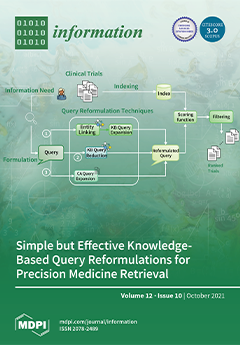Text analytics are well-known in the modern era for extracting information and patterns from text. However, no study has attempted to illustrate the pattern and priorities of newspaper headlines in Bangladesh using a combination of text analytics techniques. The purpose of this paper
[...] Read more.
Text analytics are well-known in the modern era for extracting information and patterns from text. However, no study has attempted to illustrate the pattern and priorities of newspaper headlines in Bangladesh using a combination of text analytics techniques. The purpose of this paper is to examine the pattern of words that appeared on the front page of a well-known daily English newspaper in Bangladesh,
The Daily Star, in 2018 and 2019. The elucidation of that era’s possible social and political context was also attempted using word patterns. The study employs three widely used and contemporary text mining techniques: word clouds, sentiment analysis, and cluster analysis. The word cloud reveals that election, kill, cricket, and Rohingya-related terms appeared more than 60 times in 2018, whereas BNP, poll, kill, AL, and Khaleda appeared more than 80 times in 2019. These indicated the country’s passion for cricket, political turmoil, and Rohingya-related issues. Furthermore, sentiment analysis reveals that words of fear and negative emotions appeared more than 600 times, whereas anger, anticipation, sadness, trust, and positive-type emotions came up more than 400 times in both years. Finally, the clustering method demonstrates that election, politics, deaths, digital security act, Rohingya, and cricket-related words exhibit similarity and belong to a similar group in 2019, whereas rape, deaths, road, and fire-related words clustered in 2018 alongside a similar-appearing group. In general, this analysis demonstrates how vividly the text mining approach depicts Bangladesh’s social, political, and law-and-order situation, particularly during election season and the country’s cricket craze, and also validates the significance of the text mining approach to understanding the overall view of a country during a particular time in an efficient manner.
Full article





